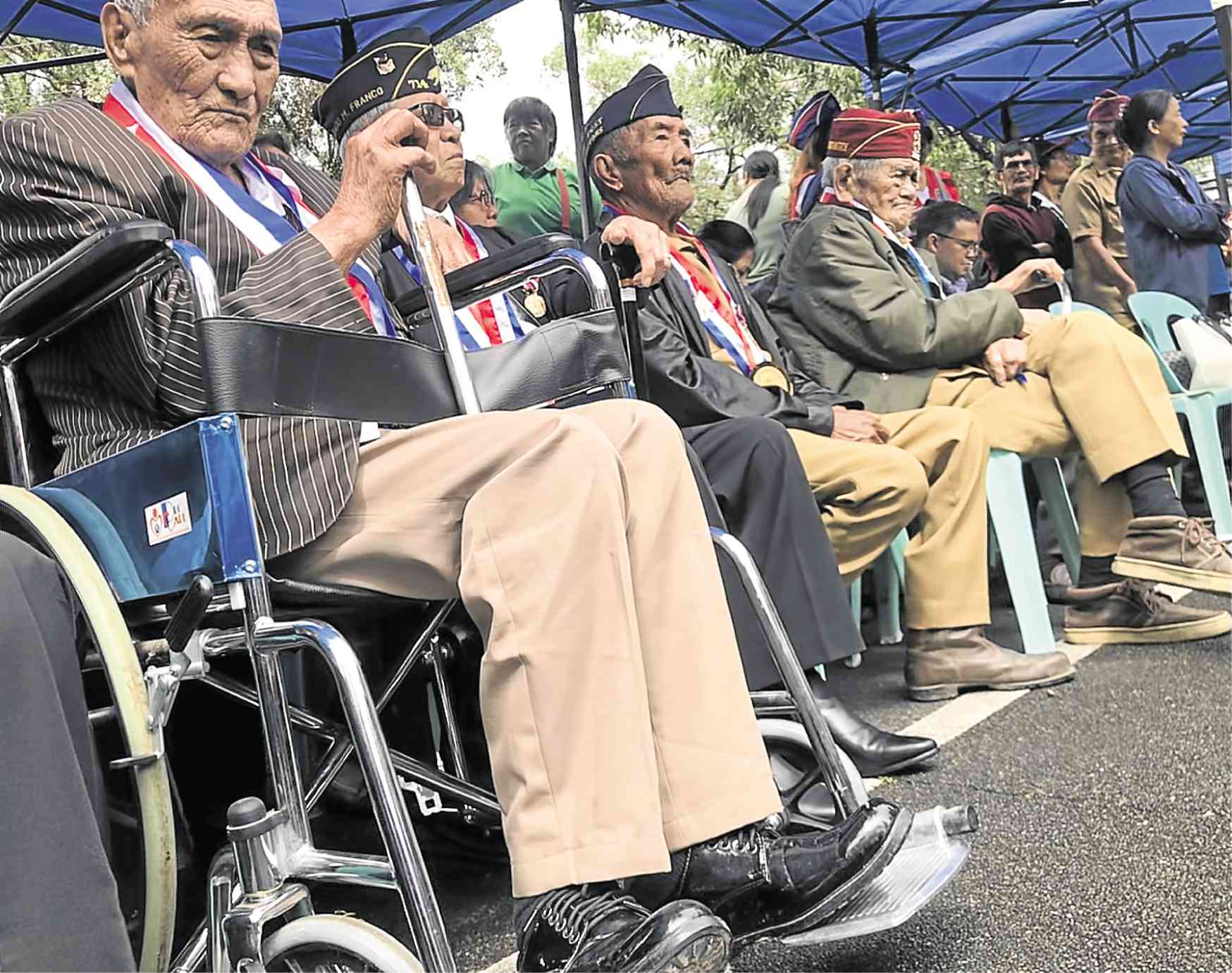War vets’ tales to teach children to defend PH

LIBERATORS World War II veterans, including guerrillas from the Cordillera who helped capture Japanese military Gen. Tomoyuki Yamashita, are honored during the celebration of Victory Day in Baguio City. —VINCENT CABREZA
BAGUIO CITY, Benguet, Philippines — Pvt. Cato Pulac and his fellow guerrillas benefited from intelligence provided by Pvt. Wilfredo Estandian, who spied for the resistance when the Japanese Imperial Army invaded the country during World War II.
Filipino soldiers were at the front lines of the war with the Japanese and were instrumental in ending the Pacific leg of the war on Sept. 3, 1945.
Seventy-four years later, Pulac, now 101, rose from his wheelchair to receive the medals and plaques honoring the roles he, Estandian and 13 other Filipino fighters played in ending the war.
Sept. 3 was a special national holiday that commemorated the formal surrender of Japanese Gen. Tomoyuki Yamashita, who was captured in Kiangan town, Ifugao province, on Sept. 2, 1945.
Forgiven, not forgotten
Article continues after this advertisementErnesto Carolina, administrator of the Philippine Veterans Affairs Office, said the holiday also reminded people about the heroism of soldiers like Pulac and members of the 66th Infantry Regiment in Benguet province who resisted the Japanese Army.
Article continues after this advertisementHe said their stories needed to be popularized among the young who would “become the next generation of defenders should the country be drawn into conflict again.”
“We have forgiven the invaders but we will not forget. We need to tell the young that many of our old soldiers died to achieve the freedom they enjoy today,” said Carolina, who led the Victory Day program here last week.
War broke out on Dec. 8, 1941, when Japanese planes bombed Camp John Hay and other installations shortly after attacking Pearl Harbor in Hawaii. The war in the country ended in Camp John Hay when Yamashita signed his surrender papers on Sept. 3, 1945.
Monuments
Yamashita was captured by a Filipino-dominated force in Kiangan but he had demanded that he be allowed to surrender to the Americans instead.
Yamashita was taken to a US-controlled facility in La Union province before he was taken to Camp John Hay, where he formally surrendered.
Carolina said one way of keeping the war stories alive was by building monuments through the government’s infrastructure initiative. —Vincent Cabreza